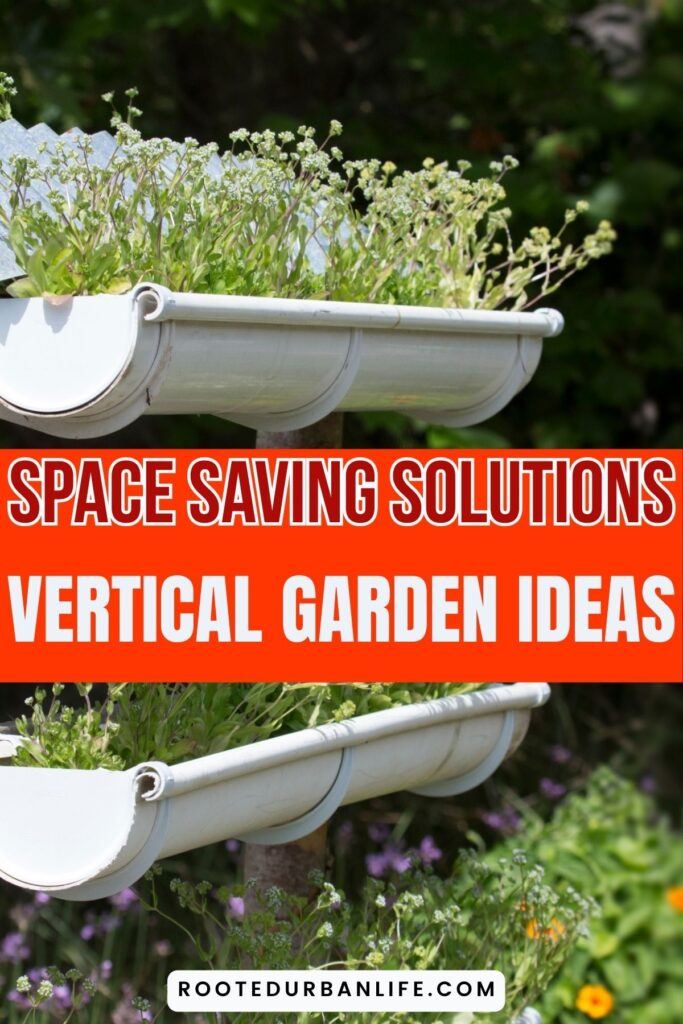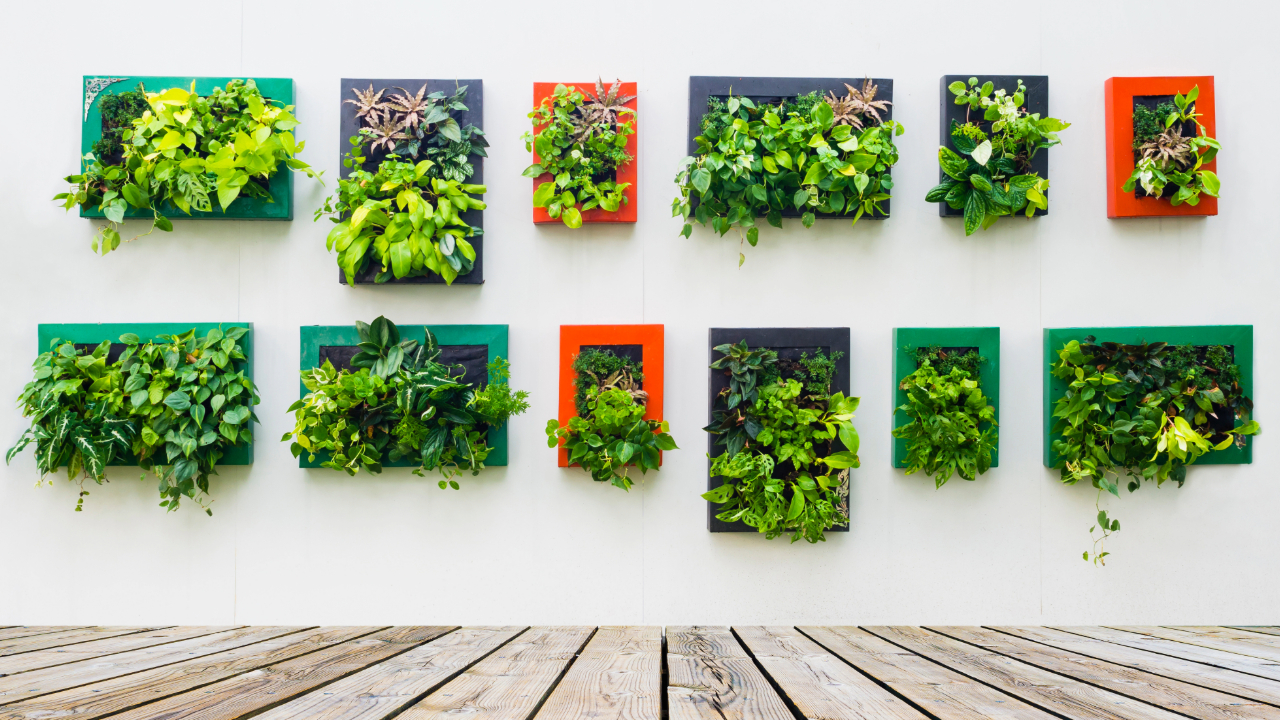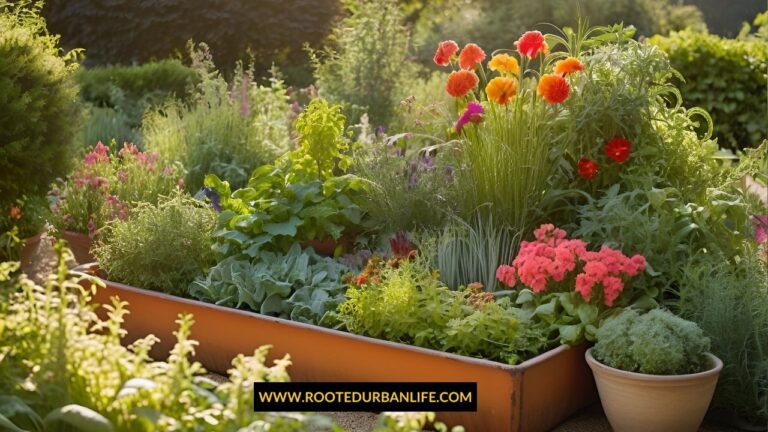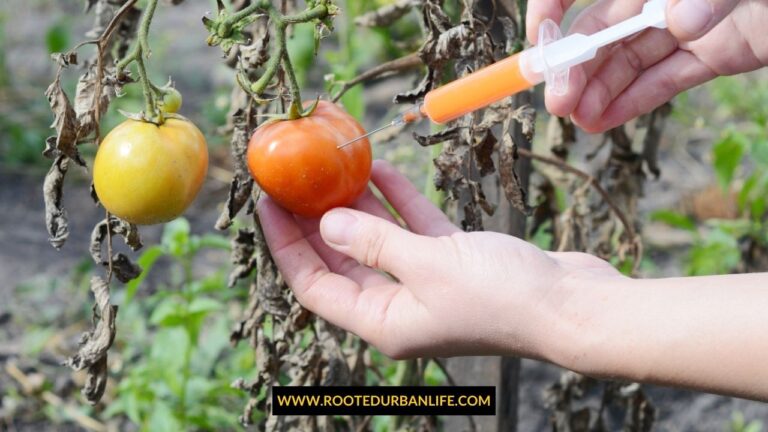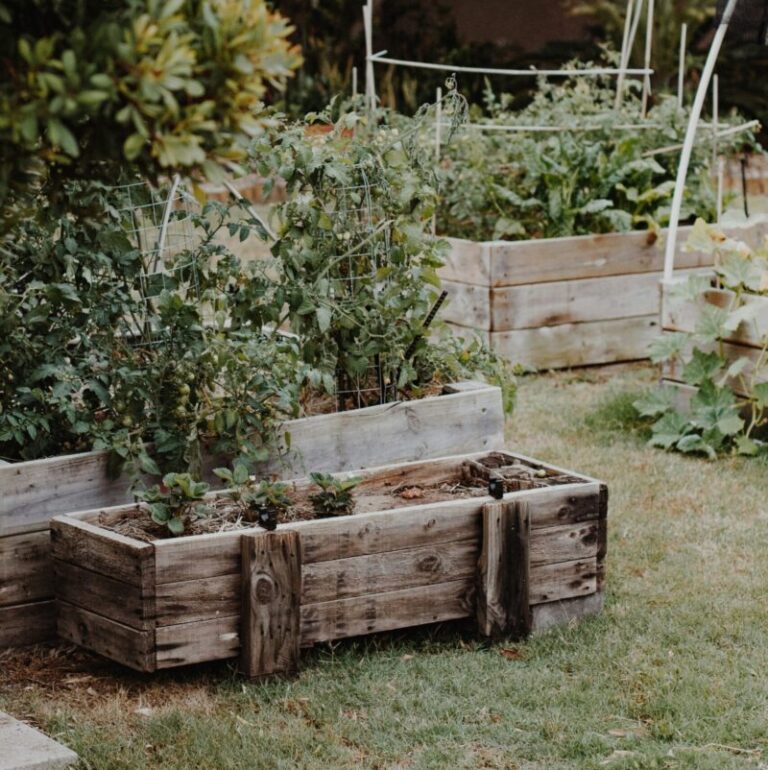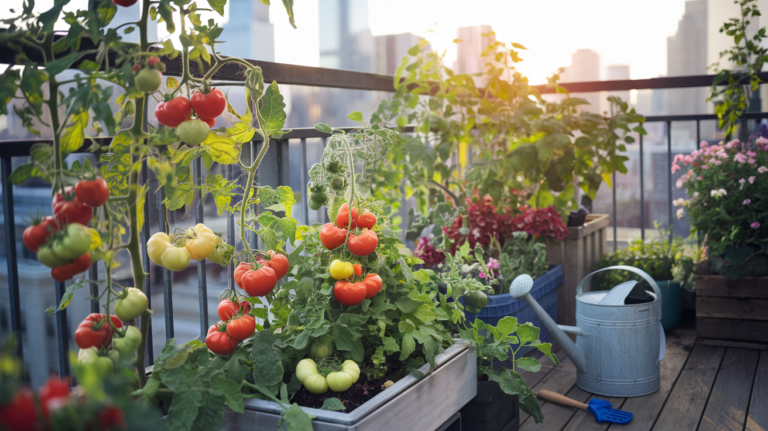Grow Up, Not Out: The Ultimate Beginner’s Guide to Vertical Vegetable Gardening in Small Spaces
Transform any limited area into a thriving garden that produces more vegetables with less space, less bending, and more harvesting
Challenge: If you’re staring at your tiny balcony, limited yard, or even just a sunny wall wondering how you’ll ever grow the garden of your dreams, you’re not alone. Urban and suburban gardeners everywhere face the frustrating reality of limited horizontal space—but the solution isn’t to give up on fresh homegrown vegetables; it’s to change your perspective from horizontal to vertical.
I remember the disappointment of trying to cram too many plants into my small apartment balcony, only to end up with a crowded, underproducing mess. That all changed when I discovered the transformative power of growing upward instead of outward.
What you will learn: In this guide, you’ll discover how to assess your space and create a vertical garden plan tailored to your specific conditions. Learn which vegetables naturally thrive in vertical systems (and which surprising ones can be trained to grow upward). We’ll also explore the step-by-step instructions for building 5 different vertical structures using both new and upcycled materials, maintenance techniques that take just minutes a day for a thriving vertical garden. Last but not least, we will look at troubleshooting solutions for common vertical gardening challenges
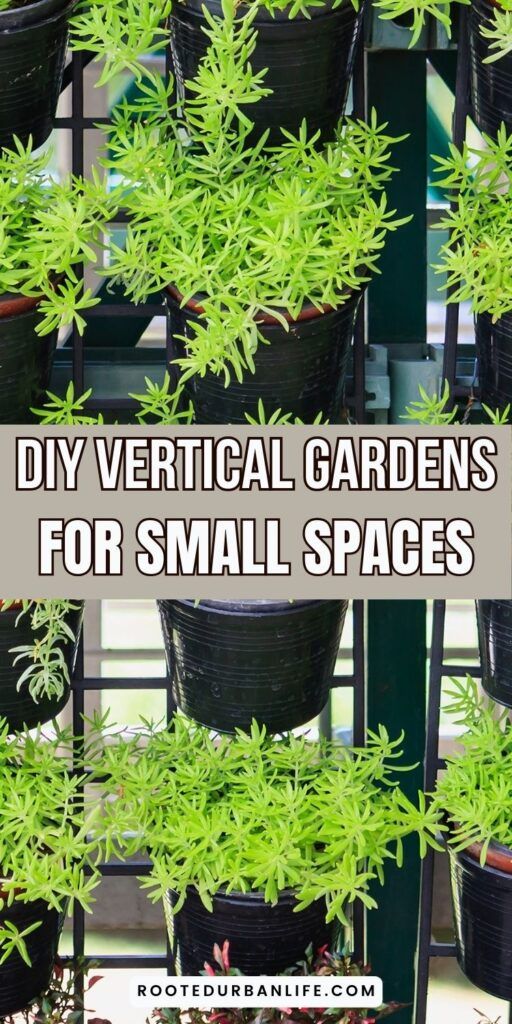
What You’ll Need to Get Started
| Disclosure: If you shop from my article or make a purchase through one of my links, I may receive commissions on some of the products I recommend at no additional cost to you. |
Before diving into construction and planting, gather these essential materials:
- Support structure materials (wood, metal, PVC, or repurposed items like pallets)
- Fasteners (screws, zip ties, garden twine, plant clips)
- Quality potting mix components (soil, compost, perlite/vermiculite)
- Seeds or seedlings of climbing or compact vegetables
- Containers (if not building directly on a wall or fence)
- Basic tools (drill, saw, scissors, gardening trowel)
- Watering system (watering can or simple drip irrigation components)
My Essential Tool Discovery: After struggling with flimsy plant ties that either broke or damaged my plants, I discovered silicone plant clips that are gentle on stems but strong enough to support heavy fruit. These reusable clips have transformed how I train climbing vegetables and have saved countless plants from stem damage.
Finding Your Perfect Vertical Garden Location
Challenge: Where Can You Actually Grow Upward Successfully?
The journey to vertical gardening success begins with finding the right spot. When I first started, I placed my vertical garden against a north-facing wall and wondered why my sun-loving vegetables were struggling. Location truly is everything.
Practical Implementation:
- Track sunlight patterns throughout the day in potential locations
- Identify spots receiving 6+ hours of direct sunlight for most vegetables
- Check weight-bearing capacity of walls, railings, or fences you plan to use
- Measure your available vertical space (height, width, depth allowance)
- Consider proximity to water sources to avoid carrying heavy watering cans
- Assess wind exposure, especially for balcony gardens
- Think about visibility and access for easy maintenance
Garden Vision: Imagine standing on your balcony or patio, coffee in hand, admiring your thriving vertical garden bathed in morning sunlight. Tomato vines climb gracefully upward, their red fruits dangling at perfect picking height. No bending, no crowding—just an efficient, beautiful living wall of food that transforms your space.
Pro Tip: Take photos of your potential locations at 9am, noon, and 3pm on a sunny day. This visual sunlight map will help you identify exactly where plants will thrive without the guesswork.
Location Troubleshooting:
| Problem | Symptoms | Solution |
|---|---|---|
| Insufficient sunlight | Leggy, pale plants with poor production | Install grow lights or relocate structure |
| Too much wind | Dried out soil, damaged leaves | Create windbreak or choose hardier varieties |
| Weight concerns | Sagging structures, wall damage | Distribute weight with multiple anchor points |
| Limited access | Neglected maintenance, unharvested produce | Redesign for easier reach or choose lower-maintenance plants |
| Brought to you by rooterurbanlife.com | ||
Location-Specific Tool: A simple light meter app on your smartphone can help determine if your chosen spot truly gets enough light for vegetables, eliminating the guesswork that often leads to poor plant performance. If you prefer a hand held tool, this light meter is lightweight, ultracompact and easy to use.

Choosing Your Vertical Structure
Challenge: Building a System That Won’t Collapse Under Weight
Not all vertical structures are created equal, and the wrong choice can lead to disappointing results—or worse, a mid-season collapse when plants are fully loaded with produce.
Practical Implementation:
- Assess your building skills and tools honestly
- Choose a structure type based on your space and needs:
- Wall-mounted trellis grid (ideal for vining vegetables)
- Repurposed gutter garden (perfect for herbs and lettuce)
- Pallet herb garden (great for beginners with limited tools)
- PVC pipe tower (excellent for strawberries and small greens)
- Tiered planter system (versatile for mixed vegetables)
- Secure your structure to a stable base or wall using appropriate anchors
- Test stability before planting by applying pressure and weight
- Ensure proper drainage to prevent water damage to walls or floors
- Consider seasonal disassembly needs if you live in harsh winter areas
Garden Vision: Your vertical garden structure stands sturdy against your sunniest wall, a beautiful framework that’s both functional and eye-catching. The design perfectly complements your space, whether it’s the rustic charm of a repurposed wooden pallet filled with cascading herbs or the modern look of a sleek metal grid covered in flowering bean vines.
Pro Tip: When building any vertical structure, always overestimate the weight it will need to support. A mature tomato plant loaded with fruit can weigh 20+ pounds, and that’s before factoring in wet soil weight.
Structure Comparison:
| Structure Type | Cost | Skill Level | Best For | Lifespan |
|---|---|---|---|---|
| Wood Trellis | $$ | Moderate | Vining vegetables | 3-5 years |
| PVC Tower | $ | Beginner | Strawberries, herbs | 5+ years |
| Repurposed Pallet | Free-$ | Beginner | Herbs, lettuce | 2-3 years |
| Tiered Planters | $$-$$$ | Easy | Mixed vegetables | 5+ years |
| Living Wall System | $$$$ | Advanced | Decorative with edibles | 10+ years |
| Brought to you by rooterurbanlife.com | ||||
Structure-Specific Tool: A stud finder is invaluable when mounting vertical gardens to walls, ensuring your anchors hit solid support rather than just drywall or siding, which could fail under weight.
Soil and Planting Strategies
Challenge: Creating the Perfect Growing Environment in Limited Space
One of my early vertical gardening mistakes was using regular garden soil in containers, which quickly compacted and drained poorly. The right soil mix makes all the difference between struggling plants and thriving ones.
Practical Implementation:
- Create a premium soil mix specifically for vertical gardens
- 1 part quality potting soil
- 1 part compost (store-bought or homemade)
- 1 part perlite or vermiculite for drainage
Difficulty: Easy | Time: 30 minutes | Space: Small mixing area
- Consider weight when filling higher containers
- Pre-moisten soil before filling vertical systems
- Choose appropriate plants for your structure:
- Vining vegetables: Indeterminate tomatoes, cucumbers, pole beans, peas
- Trainable with support: Summer squash, small melons, winter squash
- Compact varieties: Bush beans, peppers, eggplant
- Shallow-rooted crops: Lettuce, herbs, strawberries
- Space plants according to mature size but slightly closer than in ground gardens
- Implement companion planting strategies to maximize space and deter pests
- Label everything clearly—vertical gardens can get visually complex quickly
Garden Vision: Your vertical garden bursts with healthy plants growing in perfect harmony. The soil stays moist but never soggy, with excellent drainage preventing the root rot issues that plague many container gardens. Your carefully selected plant combinations mean that fast-growing lettuces are harvested just as tomatoes need more space, creating a continuous, productive system.
Pro Tip: When filling tall vertical structures, place a few inches of lightweight material like plastic bottles or packing peanuts at the bottom of deep containers. This reduces weight while creating drainage space without sacrificing root growth area for shallow-rooted plants.
Planting Troubleshooting:
| Problem | Symptoms | Solution |
|---|---|---|
| Compacted soil | Poor drainage, stunted growth | Add more perlite; avoid walking on or pressing soil |
| Overcrowding | Reduced yields, disease issues | Thin plants early; be realistic about spacing needs |
| Nutrient deficiency | Yellowing leaves, poor production | Implement regular feeding schedule with liquid fertilizer |
| Inappropriate plant selection | Failing plants despite good care | Replace with varieties better suited to vertical growth |
| Brought to you by rooterurbanlife.com | ||
Planting-Specific Tool: A moisture meter takes the guesswork out of watering vertical gardens, where irrigation needs can vary dramatically between the top and bottom of the structure.
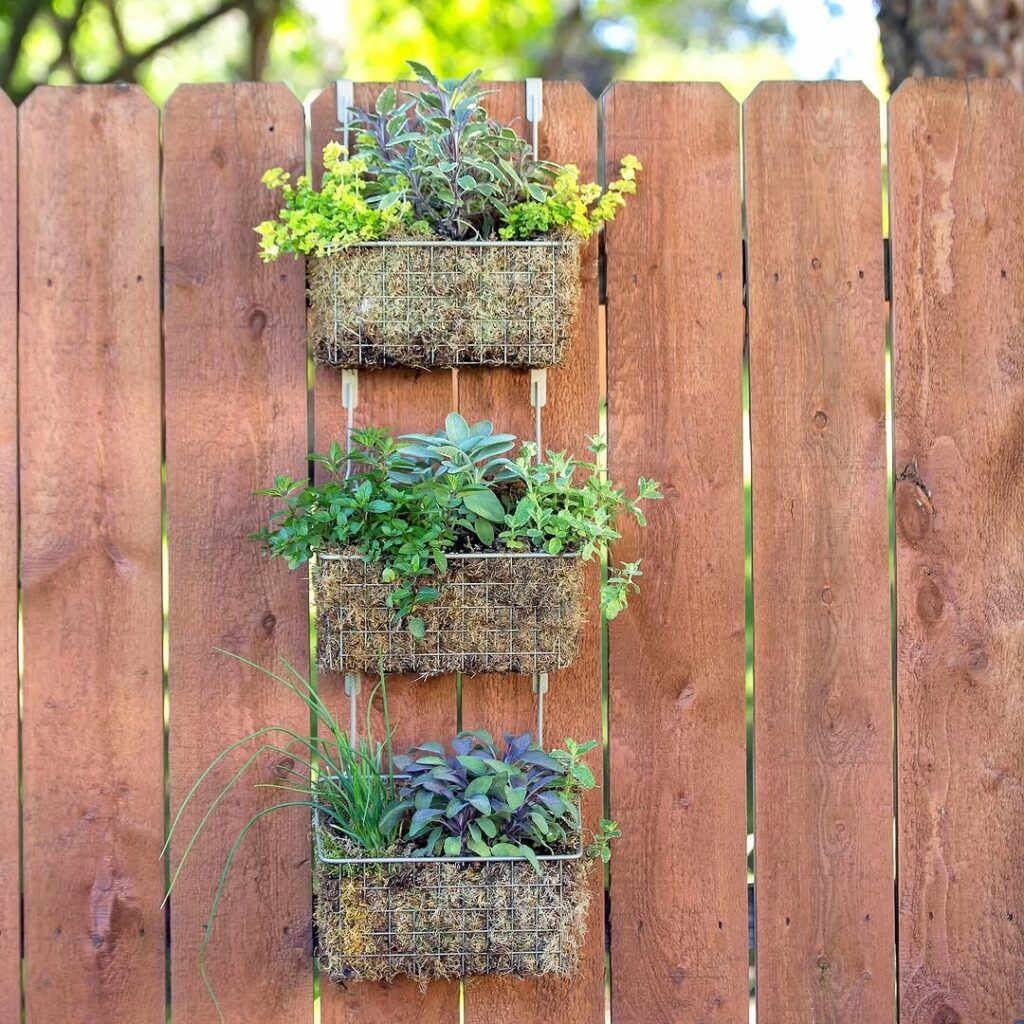
Maintenance Made Easy
Challenge: Keeping Your Vertical Garden Thriving with Minimal Time Investment
The beauty of vertical gardening is that with proper setup, maintenance actually becomes easier than traditional gardening—but it does require consistency.
Practical Implementation:
- Establish a watering system appropriate for your setup
- Simple drip irrigation on timer for larger setups
- Self-watering reservoirs for smaller systems
- Hand-watering routine for budget options
Difficulty: Moderate | Time: 30 minutes setup, 5 minutes daily | Space: N/A
- Implement a fertilization schedule:
- Apply balanced liquid fertilizer every 2-3 weeks
- Consider slow-release options at planting time
- Use compost tea for organic gardens
- Train plants regularly:
- Guide new growth onto supports weekly
- Use soft ties or clips to secure stems
- Prune excessive growth to maintain airflow
- Harvest frequently to encourage continued production
- Monitor for pests and diseases with weekly inspections
- Remove yellowing or diseased leaves promptly
- Add support for heavy fruit as plants mature
Garden Vision: Your vertical garden practically takes care of itself with the efficient systems you’ve put in place. Each morning, you spend just five minutes adjusting a few stems and harvesting ripe vegetables while your coffee brews. The automatic drip system handles watering, and your strategic planting means pests rarely gain a foothold. This is low-maintenance gardening at its finest.
Pro Tip: Create a simple maintenance checklist and keep it near your garden. A quick daily glance for water needs, a mid-week training session, and a weekend fertilizing routine will keep your garden thriving with minimal time investment.
Maintenance-Specific Tool: A simple automatic drip irrigation kit with a timer can transform your vertical garden experience, ensuring consistent moisture even during hot periods or when you’re away from home.
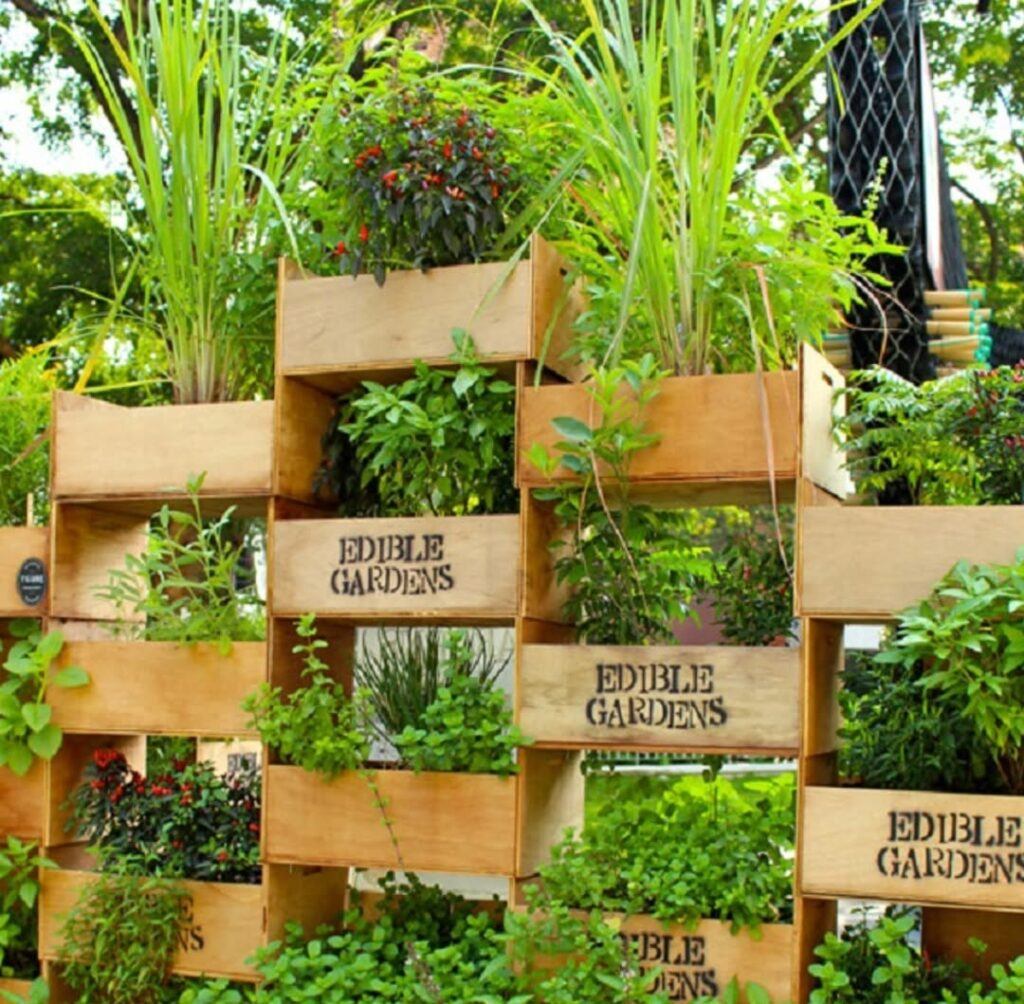
Troubleshooting Your Vertical Garden
Challenge: Solving Common Problems Before They Destroy Your Harvest
Even the best-planned vertical gardens encounter challenges. The key is identifying issues early and taking swift action.
Common Challenges Table:
| Challenge | Warning Signs | Quick Fix | Future Prevention |
|---|---|---|---|
| Uneven Watering | Dry top soil, soggy bottom, wilting despite watering | Install drip irrigation at multiple levels to ensure even moisture distribution | Add coconut coir or water-retaining crystals to your soil mix |
| Structure Sagging | Bending supports, leaning plants, visible strain at connection points | Add diagonal bracing and reinforcement brackets to weak points | Build with 30% more load capacity than you think you’ll need |
| Pest Invasions | Damaged leaves, sticky residue, visible insects, stunted growth | Introduce beneficial insects like ladybugs or apply neem oil spray | Plant pest-repelling companions like marigolds and implement regular inspection routines |
| Nutrient Runoff | Yellowing lower plants, mineral stains on structures, uneven growth | Create a catchment system to recirculate water and stagger fertilizing schedules | Use slow-release organic fertilizers and install drip trays under containers |
| Plant Entanglement | Difficult harvesting, broken stems, plants competing for space | Carefully untangle and train plants weekly, prune excessive growth | Space appropriately from the start and choose varieties that play well together |
| Sun Damage | Fruit with white/yellow patches, leaf scorching, wilting during peak heat | Install temporary shade cloth during heat waves and increase watering frequency | Position structure for morning sun exposure with afternoon shade protection |
| Brought to you by rooterurbanlife.com | |||
Recovery Strategies:
- For struggling plants: Prune back by 1/3, apply liquid seaweed fertilizer, and adjust watering immediately
- For pest outbreaks: Isolate affected plants, treat with appropriate organic solutions, introduce beneficial insects
- For structural issues: Temporarily support plants while reinforcing or rebuilding affected areas
- For disease problems: Remove affected plant material, improve air circulation, apply organic fungicides if appropriate
Frequently Asked Questions
Q: Can I really grow heavy vegetables like melons vertically?
A: Yes! With proper support structures and individual fruit slings made from old t-shirts or pantyhose, you can successfully grow smaller melon varieties vertically. Varieties like ‘Minnesota Midget’ cantaloupe or ‘Sugar Baby’ watermelon are ideal candidates.
Q: How do I prevent my vertical garden from drying out too quickly?
A: Incorporate water-retaining materials like coconut coir into your soil mix, apply mulch to the soil surface, consider self-watering systems, and group plants with similar water needs together. A moisture meter can help you monitor conditions accurately.
Q: Will my vertical garden damage my wall or fence?
A: With proper installation, it shouldn’t. Always create a slight gap between your structure and the wall for air circulation, ensure proper drainage to prevent moisture damage, and use appropriate anchors distributed to spread the weight load evenly.
Q: How do I transition my vertical garden between seasons?
A: Plan succession planting by replacing spring crops with heat-lovers in early summer, then transitioning to fall crops like peas and greens as summer plants finish. In cold climates, consider movable structures that can be relocated or protected during winter.
Q: Is vertical gardening more expensive than traditional gardening?
A: The initial setup can cost more than in-ground gardening, but the investment typically pays off through increased yields per square foot, reduced pest and disease issues, and the ability to garden in otherwise unusable spaces. Many structures can be built using repurposed materials to reduce costs.
Q: How do I prevent nutrient deficiencies in my vertical garden?
A: Use a premium potting mix at planting time, implement a regular feeding schedule with balanced liquid fertilizer, consider slow-release fertilizer options, and watch for early signs of deficiency like yellowing leaves or stunted growth.
Key Takeaways
- Vertical gardening can triple your growing space in the same footprint, making it perfect for balconies, small yards, and urban environments
- Always build structures stronger than you think necessary—mature plants with fruit can add significant weight over time
- Choose plants specifically bred for vertical growing or those with natural climbing tendencies for best results
- Vertical gardens typically require more frequent watering but reward you with better disease resistance due to improved air circulation
- Proper vertical garden design reduces bending and kneeling, making gardening accessible for people of all ages and physical abilities
- Start with one simple structure before expanding to more complex systems
- Monitor your plants closely during the first growing season to understand the unique microclimate of your vertical garden
- The investment in a simple drip irrigation system will save countless hours and improve plant health significantly
- Even heavy fruiting plants like tomatoes and small melons can thrive vertically with proper support systems
- Vertical gardening isn’t just practical—it creates living walls of beauty that transform ordinary spaces into extraordinary ones
Next Steps On your Gardening Journey
As you become comfortable with basic vertical gardening techniques, consider these next steps to expand your skills and garden productivity:
- Transform Kitchen Waste in Garden Gold
- Beginners Guide to Companion Planting
- Small Space, Big Harvest: 10 plants to gor on the balcony
Essential Tools for Vertical Gardening Success
These carefully selected tools will make your vertical gardening journey significantly easier:
- Quality Bypass Pruners – Essential for training plants and harvesting
- Lightweight Watering Wand – Reaches upper levels without stretching
- Folding Garden Stool – Provides comfortable access to lower levels
You now have all the knowledge needed to transform even the smallest space into a productive vertical vegetable garden. Remember that vertical gardening is as much about the journey as the harvest—each season will bring new insights and improvements to your system.
Start small with just one vertical structure, perhaps a simple trellis with cucumbers or beans. As your confidence grows, so too can your garden—expanding upward instead of outward. The satisfaction of harvesting fresh vegetables from a space you once thought too small for gardening is truly unmatched.
What unused vertical space in your home or yard might you transform into a productive garden? I’d love to hear your plans and answer any questions in the comments below!
